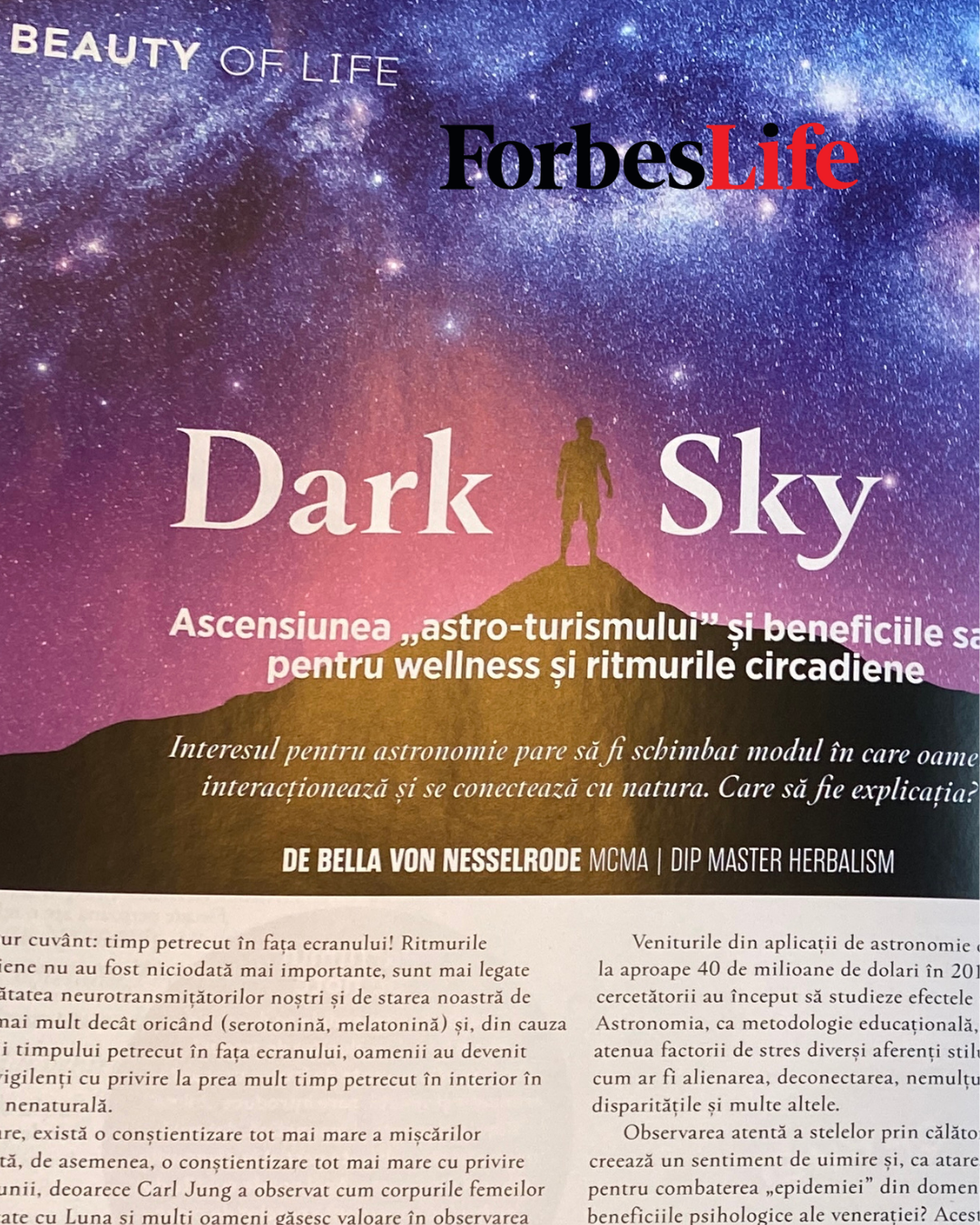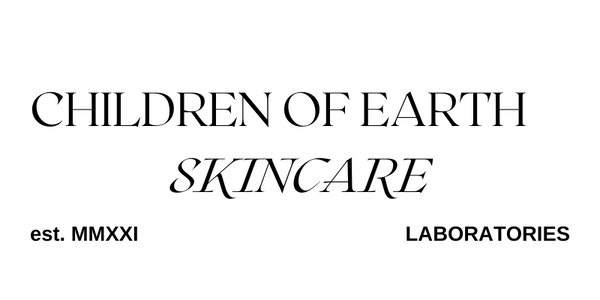
BEAUTY OF LIFE: Dark Sky, the rise of "astro-tourism"
BEAUTY OF LIFE: Forbes Life Romania
Dark Sky
The rise of "astro-tourism" and its benefits for wellness and circadian rhythms
Interest in astronomy seems to be changing the way people interact and connect with nature. What’s the explanation?
By Bella von Nesselrode MCMA | Dip Master Herbalism
It all starts with one word: lack of sky.
Our circadian rhythms are heavily affected, and the many nights without the unfiltered glow of the stars impact our mood more than we realize (frustration, melancholy), as well as our bodies (lack of focus, fatigue, vegetative function disorders), and mental health (with increased risk of emotional disorders).
In the past, people were much more in touch with the great movements of nature. There is a growing awareness that we perceive only a fraction of light. The moon, setting the tone for other cycles and functions of the world (from tides to ovulation in certain creatures), also influences our biological clock. Any trip to the mountains or stay in nature without light pollution brings health benefits: not just through physical activity, but also through reconnecting to natural rhythms. And more than that: some specialists now talk about real therapeutic benefits from gazing at the starry sky.
In 2021, Forbes magazine specifically highlighted astro-tourism as one of the key trends in wellness tourism. From astronomy camps for children and adults to retreats and experiences where the sky is viewed without filters, this movement has given rise to a new type of refuge, where screens disappear and the body is exposed to "cosmic intimacy." In 2023, Children of Earth Skincare was one of the first companies to launch a holistic skincare line based on the movements of the stars, with treatments inspired by this movement. Other retreats focus on digital detox and completely stepping out of the notification space. Darkness teaches us to listen to our bodies and give them time to recover.
A compelling example is the massive rise during the pandemic in demand for nature-based accommodations. Most tourists started looking for places far from sources of artificial light.
Revenues from astronomy apps in the USA rose by 64.2%, and destinations recognised as Dark Sky locations started appearing more frequently in tourist searches (between 2016 and 2021, their number almost doubled). New accommodations have been developed to meet this demand: rooms without artificial lighting, lounge areas for sky observation, menus and therapies adapted to circadian rhythms (like afternoon naps or avoiding blue light sources).
The organization that grants these certifications is IDA (International Dark-Sky Association), and the list of accredited places can be found on their website. In Romania, the Bătrâna area in the Țarcu Mountains is internationally recognized as one of the darkest natural areas. Also, the Cheile Nerei–Beușnița National Park has been proposed for inclusion on this list.
More than that, the concept is increasingly linked to wellness. Many therapists have begun to include natural cycles in their recovery rituals, sleep therapies, or hormonal detox programs. For example, applying oil during a certain moon phase, or adjusting rest time based on the solar season. It’s not mysticism: it’s a return to the internal clock.
It might seem like a new trend, but in reality, it's a rediscovery. Gazing at the sky has guided humanity for millennia.Today, darkness seems to be turning into a new kind of luxury: one that isn’t bought, but cultivated.
And what if it’s not just a trend, but a new path to healing under the Cosmos?
